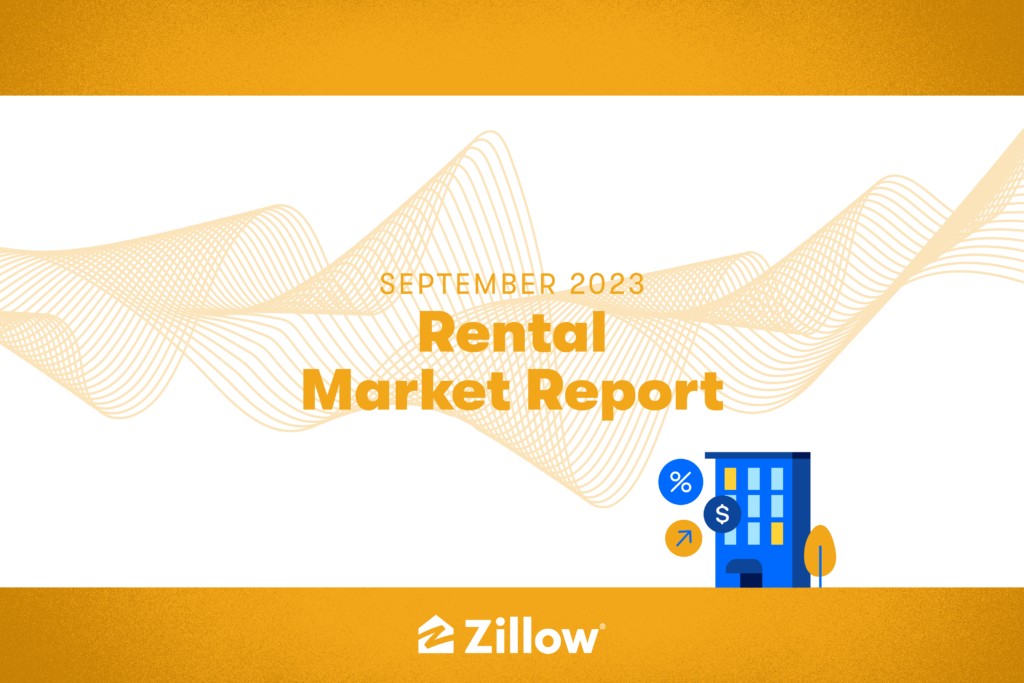Rents Are Just Barely Climbing (September 2023 Rent Report)
Annual rent growth cooled again, to 3.2%, in September.

Annual rent growth cooled again, to 3.2%, in September.

Asking rents climbed by 0.2% in September, to $2,047, according to the latest edition of the Zillow Observed Rent Index (ZORI). Typical asking rents are now 3.2% higher than one year ago, continuing a steady, 19-month-long slowdown in the annual growth rate since hitting a record-high 16% in February 2022. In fact, September’s annual growth rate is now solidly below the annual pace observed just prior to the pandemic: Year-over-year growth hovered between 4.0% and 4.2% in 2019.
The 0.2% monthly increase is a step down from August’s 0.3% monthly growth, but a little faster than the average pre-pandemic September, in which rents were unchanged, averaged over data from 2015 to 2019. This past third quarter saw national monthly rent growth slightly higher than pre-pandemic seasonal averages, after several months of cooler growth. That could reflect rent growth’s underlying resilience, or a change in seasonal patterns due to the pandemic. September’s monthly growth rate was roughly the same as last September’s (0.2%); last October was the first month in two years where rents declined on a monthly basis, so it will be interesting to see if rent change tips below zero again this October.
Annual rent growth is cooling off thanks in part to a deluge of new multifamily construction – financed and started while mortgage rates were at historic lows – finally coming onto the market and accepting new tenants.
By the same token, much higher borrowing costs now are likely to impede the flow of new apartment construction. Construction starts for buildings with five or more units stepped sharply lower in August, to a three-year low. While a large number of multifamily buildings are still under construction, financing and cost challenges have certainly increased headwinds for the industry.
Among the 50 largest metropolitan areas, rents rose the most on a monthly basis in September in Milwaukee (0.8%), Virginia Beach (0.8%), Philadelphia (0.7%), Hartford (0.6%) and Louisville (0.5%).
The biggest monthly declines in rent were observed this September in many former hot-spots for pandemic-era growth; Austin (-0.9%), Memphis (-0.6%), Orlando (-0.4%), Las Vegas (-0.3%), and Salt Lake City (-0.3%). The drastic decline in affordability in these areas over the course of the past few years has helped slow the pace of in-migration, and has pushed local renters to economize by hunkering down in existing leases, living with more roommates, or seeking cheaper units. These are also areas where multifamily units have come onto the market, bringing competitive pressure to landlords.
Annual rent growth was highest in Providence (7.6%), Hartford (7.2%), Chicago (5.7%), Buffalo (5.7%), and St. Louis (5.5%). These relatively affordable markets have proven attractive for both renters and buyers. They also haven’t seen the sheer number of new construction deliveries more common in the South and Southwest, adding leaving tenants with few new alternatives to existing rentals.
The weakest year-over-year rent growth can mostly be found out west. On a year-over-year basis, rents are down 2.8% in Austin, down 1.4% in Las Vegas, down 0.1% in Portland, Ore., and have increased the least in San Jose (0.0%) and San Francisco (0.0%). These include some of the markets most exposed to tech industry hiring weakness, as well as some of the top destinations to which remote workers decamped earlier in the pandemic.
The most expensive major markets are the New York City metro area ($3,376), San Jose ($3,333), San Diego ($3,159), San Francisco ($3,142), and Los Angeles ($3,001). That continues a trend first observed in July, when the Big Apple’s metropolitan area began to have the highest asking rents in the nation. For more information on the New York City rental market, see the latest market report from StreetEasy.
The cooldown in official rent inflation, presaged by the slowdown in ZORI growth last year, is continuing apace: The annual growth rate of the Rent of Primary Residence component of the Consumer Price Index (CPI) fell from a peak of 8.81% in March to 7.76% in August. Moreover, the monthly growth rate has been running below a 6.5% annualized pace for six months now, which will further pull down the observed annual growth rate if sustained. The monthly growth rate was especially hot for CPI Rent from last October through February, so the year-over-year comparisons will remain favorable in the coming months. It takes time for disinflation to fully factor into monthly CPI prints, though. That means the large shelter component in both CPI and the Fed’s preferred Personal Consumption Expenditure price index will contribute to the appearance of elevated inflation for several months to come.
Rent (and generally, shelter) inflation is looming particularly large, as the annual growth rate of all other components of the CPI fell below 2% this summer, from a more-than-40-year high of 10.8% in June of last year. The volatile Energy component is beginning to lift it, though, which will bear close attention in coming months.
The Federal Reserve’s Open Market Committee held the short-term Fed Funds Rate steady at a range of 5.25-5.50% at their September 20 meeting, but long-term interest rates have soared in the subsequent fortnight. The 10-year Treasury yield, for instance, climbed from 4.35% to 4.73% as of this writing on October 4. Those higher borrowing rates are translating to higher mortgage rates, continuing to push mortgage costs to record highs this fall. That may have the perverse effect of reigniting rent inflation by preventing some renters from moving out to buy their first homes, if mortgage rates remain that high for long.